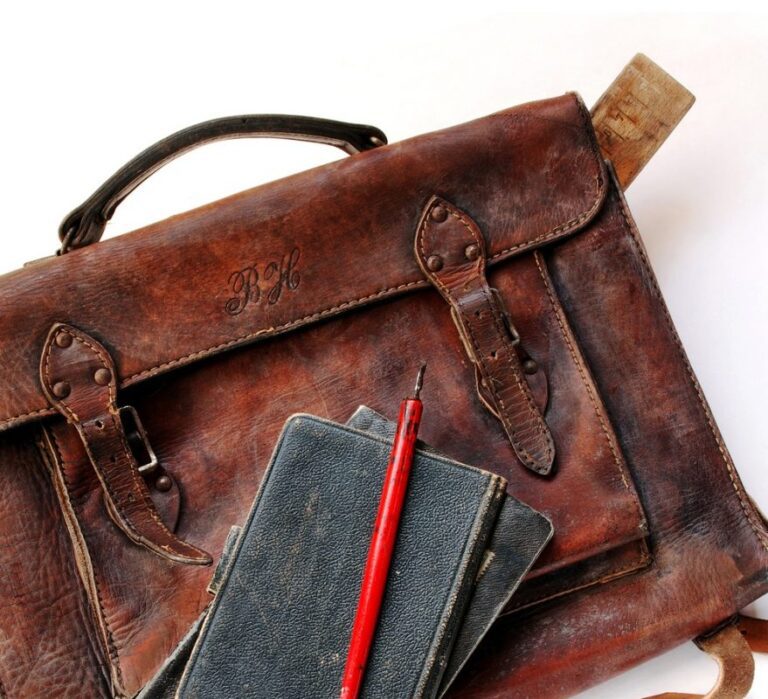Breathe Easy: Expert Strategies for Banishing Smoke Odor from Leather Couch
Removing Smoke Smell from Leather
Quick Action for Effective Odor Removal
Addressing smoke odors promptly on a leather couch is crucial, as prolonged exposure makes it significantly harder to eliminate the smell (HydroForce Cleaning Systems). Here are some effective strategies for quick action:
-
Baking Soda and Sunlight: Sprinkle baking soda generously on the affected leather areas and let it sit for several hours. Afterward, place the couch outdoors in direct sunlight for several hours. The UV rays aid in breaking down odor-causing molecules (GardenWeb).
-
Vanilla Extract and Water Solution: Mix real vanilla extract with water in a spray bottle. Lightly mist the interior and exterior leather surfaces. Allow it to air dry completely.
-
Activated Charcoal: Place activated charcoal in small breathable bags and position them on and around the couch. Charcoal effectively absorbs odors over a few days.
| Method | Time Required |
|---|---|
| Baking Soda and Sunlight | Several hours |
| Vanilla Extract Solution | Air dry |
| Activated Charcoal | Few days |
Utilize these methods as part of your regular maintenance routine to keep your leather furniture smelling fresh. For additional maintenance tips, consider reviewing our how to wash leather couch guide.
Testing Methods Safely
Before applying any cleaning method to your entire couch, it’s important to test it on a small, inconspicuous area first to avoid potential damage. Here’s a step-by-step approach:
-
Choose a Hidden Spot: Identify a less visible section of your leather couch, such as the back or underside of a cushion.
-
Apply the Cleaning Method: Use your chosen odor-removal technique on this small area.
-
Observe for Reactions: Check for any discoloration, fading, or damage to the leather.
-
Wait Time: Allow the test spot to sit for at least 24 hours to ensure there are no adverse effects before applying the method to the entire couch.
Testing methods safely is essential to preserve the condition of your leather furniture. For more in-depth insights on leather care, explore our article on why does leather crack and peel.
By following these strategies, you can effectively remove smoke smells from your leather couch and maintain its pristine condition. For those interested in further leather care tips, check out our guides on how to remove smell from leather sofa and how to remove odor from leather chair.
Preventing Smoke Smells on Leather
To keep a leather couch free from smoke odors, preventative measures are key. By implementing preventative practices and maintaining freshness, you can avoid the hassle of needing to remove unpleasant odors from your leather furniture.
Smoking Practice Prevention
Preventing smoke smells on leather starts with modifying smoking practices. Here are some effective strategies:
- Avoid Smoking Indoors: Whenever possible, smoke outside. If you need to smoke indoors, stand near an open window and blow the smoke outside to reduce exposure to your furniture.
- Use an Exhaust Fan: Use an exhaust fan to divert smoke away from your leather couch. This practice helps in preventing smoke particles from settling onto the leather surface.
- Keep Non-Porous Surfaces Clean: Regularly clean all non-porous surfaces in the room, including your leather furniture. This helps in reducing smoke residue transfer. For more tips, check out our guide on how to remove smoke smell from leather couch.
Maintenance Tips for Freshness
Routine maintenance is essential to keep your leather couch smelling fresh and free from smoke odors. Consider the following tips:
- Regular Dusting: Dust the room frequently to minimize the accumulation of smoke particles. Pay special attention to your leather furniture and other non-porous surfaces.
- Proper Disposal: Dispose of cigarette butts properly to prevent lingering odors. Avoid leaving ashtrays in close proximity to your leather couch.
- Leather Cleaning Schedule: Establish a regular cleaning schedule for your leather furniture. Use leather-specific cleaning products designed to preserve its natural oils and integrity. For more cleaning methods, visit our guide on how to wash leather couch.
Following these prevention and maintenance tips will not only keep your leather couch smelling fresh but also help in extending its lifespan and appearance. For persistent odors or professional assistance, consider reading our section on professional help for lingering odors.
Professional Help for Lingering Odors
When it comes to removing stubborn smoke smells from your leather furniture, sometimes professional assistance is the best course of action. Here, we discuss why you might need expert help and what advanced deodorization methods professionals use.
Need for Expert Assistance
Smoke odors, particularly from cigarettes, are notoriously stubborn. These smells can penetrate deep into the leather, making them difficult to remove with household methods. Seeking assistance from professionals who provide advanced deodorization services can effectively eliminate smoke odors that are hard to remove on your own (HydroForce Cleaning and Restoration).
Professional fire and smoke damage restoration services specialize in removing persistent odors and can offer peace of mind. They utilize specialized equipment and techniques to ensure that your leather furniture is thoroughly cleaned and restored to its original state.
For more information on maintaining leather, see how to clean leather couches and how to repair damaged leather.
Advanced Deodorization Methods
Professionals use a range of advanced deodorization methods to tackle smoke odors:
-
Ozone Treatment: Ozone generators are employed to neutralize smoke molecules embedded in the leather. This method effectively breaks down the odor-causing particles.
-
Thermal Fogging: This technique involves the use of a fogging machine that releases deodorizing compounds into the air. The fog penetrates deep into the fibers of the leather, neutralizing smoke odors at the molecular level.
-
Activated Charcoal: Professionals might use activated charcoal to absorb smoke odors from the leather. This method is particularly effective for long-term odor control.
-
Air Scrubbers: These machines use high-efficiency particulate air (HEPA) filters to remove particles and odors from the air. They can be placed near your leather furniture to aid in the deodorization process.
-
Deep Cleaning: Expert cleaners may use specialized leather cleaners and conditioners to break down smoke residues stuck to the surface and impregnated in the leather layers.
| Deodorization Method | Description |
|---|---|
| Ozone Treatment | Neutralizes smoke molecules |
| Thermal Fogging | Releases deodorizing compounds deep into leather fibers |
| Activated Charcoal | Absorbs smoke odors |
| Air Scrubbers | Removes particles and odors from the air |
| Deep Cleaning | Uses specialized cleaners to break down smoke residues |
For additional resources on odor removal, you can review our guides on how to remove smell from leather sofa and how to remove odor from leather chair.
By opting for professional help, you can ensure that your leather furniture is free from lingering smoke odors and well-maintained for its longevity. If you struggle with other leather issues, such as cracks or peeling, refer to our articles on why does leather crack and peel and how to repair peeling faux leather bag.
Leather Cleaning Services
Professionals for Leather Care
For the care of your leather couch, consider professional leather cleaning services like those provided by Stanley Steemer. Their services include cleaning leather furniture such as couches, chairs, ottomans, and automotive leather. Professional cleaning helps preserve your leather’s classic look, extend its longevity, and maintain its original appearance.
| Service | Benefits |
|---|---|
| Professional Cleaning | Preserves classic look |
| Cleaning Couches | Extends longevity |
| Cleaning Chairs | Maintains original appearance |
| Cleaning Ottomans | Removes stubborn stains |
| Cleaning Automotive Leather | Enhances durability |
Types of Leather Cleaning
Professional leather cleaners like Stanley Steemer are well-versed in handling various types of leather, including pigmented leather, aniline leather, nubuck leather, and suede leather. They inspect and identify the specific type of leather before determining the most suitable cleaning method.
| Leather Type | Characteristics | Cleaning Method |
|---|---|---|
| Pigmented Leather | Durable, uniform color | Mild cleaning agents |
| Aniline Leather | Soft, natural finish | Gentle, non-abrasive cleaners |
| Nubuck Leather | Soft, velvety texture | Specialized vacuuming and brushing |
| Suede Leather | Fuzzy surface | Special cleaning brushes and products |
Understanding the type of leather you have ensures that the appropriate cleaning method is applied, preventing any damage and prolonging the lifespan of your leather furniture. For more information on leather care, visit our articles on how to wash leather couch, how to get stains out of leather, and how to soften hard leather.
After-Cleaning Care for Leather
Proper after-cleaning care is crucial to maintain the beauty and longevity of your leather couch, especially after removing smoke smell. This section explores two essential steps: replenishing natural oils and extending the leather’s lifespan.
Replenishing Natural Oils
Cleaning leather can strip it of its natural oils, leading to dryness and potential cracking. It’s essential to replenish these oils to keep the leather supple and prevent damage. Applying a high-quality leather conditioner can help restore the leather’s natural oils, making it softer and more resilient.
According to Stanley Steemer, they apply a conditioner after cleaning to make the leather softer and help it maintain its integrity. Conditioning helps to hydrate the leather, restore its natural sheen, and protect it from future wear and tear.
To replenish natural oils, follow these steps:
- Clean the Leather: Ensure that the leather is thoroughly cleaned and free of any residue or smoke odor.
- Apply Conditioner: Use a soft cloth to apply the leather conditioner evenly across the surface. Follow the manufacturer’s instructions for best results.
- Let It Absorb: Allow the conditioner to absorb into the leather for the recommended time.
- Buff the Surface: Use a clean, dry cloth to buff the leather and remove any excess conditioner.
Extending Leather Lifespan
Extending the lifespan of your leather couch is about more than just keeping it clean. Regular maintenance, including conditioning and protecting the leather, can help prevent common issues such as cracking and fading.
-
Regular Conditioning: Regularly condition the leather to keep it hydrated. This can prevent the leather from becoming brittle and cracking over time. Refer to our article on why does leather crack and peel for more insights.
-
Protect from Sunlight: Prolonged exposure to direct sunlight can cause the leather to fade and dry out. Position your leather couch away from windows or use curtains to block out harmful UV rays.
-
Avoid Harsh Chemicals: Use products specifically designed for leather care. Harsh chemicals can strip away the leather’s natural oils and damage the surface.
-
Regular Cleaning: Maintain a regular cleaning schedule to keep your leather looking its best. Lightly dust and clean your leather furniture weekly and perform a more thorough cleaning monthly. For more detailed cleaning tips, visit our guide on how to wash leather couch.
-
Use Protective Covers: In high-traffic areas, use protective covers to minimize wear and tear. This can help preserve the leather’s appearance and prolong its lifespan.
By following these steps, you can ensure that your leather couch remains beautiful and comfortable for years to come. For additional advice on maintaining leather items, check out our resources on how to remove smell from leather bag and how to remove odor from leather chair.
Regular Maintenance Recommendations
Regular maintenance is essential for preserving the quality and appearance of your leather furniture, ensuring it remains free from unwanted odors, such as smoke. Below are guidelines on cleaning frequency and maintenance practices for high-traffic areas.
Cleaning Frequency Guidelines
For leather furniture that undergoes normal use and exposure to daily elements, it’s advisable to adhere to a regular cleaning schedule:
| Usage Type | Recommended Cleaning Frequency |
|---|---|
| Normal Use | Every 6-12 months |
| High-Traffic Areas | Every 3 months |
Professional cleaning every 6-12 months is recommended for leather that experiences typical soiling. However, furniture situated in high-traffic environments may require cleaning more frequently, approximately every 3 months, to maintain its condition (Stanley Steemer).
To effectively remove cigarette odors from leather, it’s crucial to test cleaning methods in inconspicuous areas to avoid potential damage (HydroForce Cleaning Systems).
For additional tips on maintaining your leather furniture, visit our article on how to remove smoke smell from leather sofa.
High-Traffic Area Cleaning Preferences
Leather furniture located in high-traffic areas demands more rigorous maintenance practices to remain fresh and clean. Here’s why and how:
- High-traffic areas are more susceptible to accumulating dirt and grime.
- Frequent cleaning (every 3 months) is required to manage the increased wear and tear.
- Use a professional service to ensure thorough cleaning and preservation of leather quality.
By following these recommendations, you can ensure that your leather furniture stays in optimal condition, prolonging its lifespan and maintaining a smoke-free environment.
For more detailed guidance on leather care, check out our articles on how to get scratches out of leather and how to remove urine smell from leather couch.







